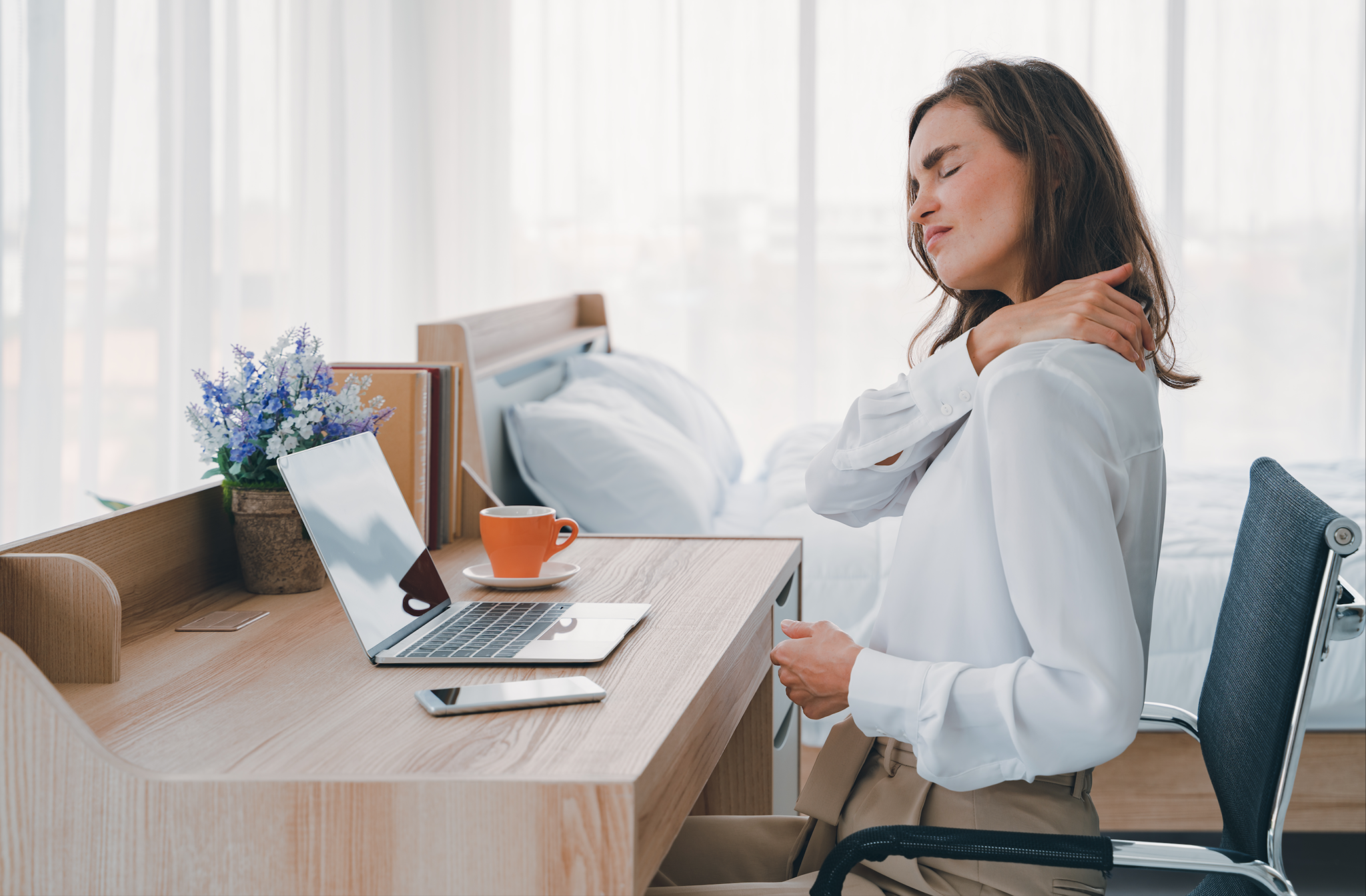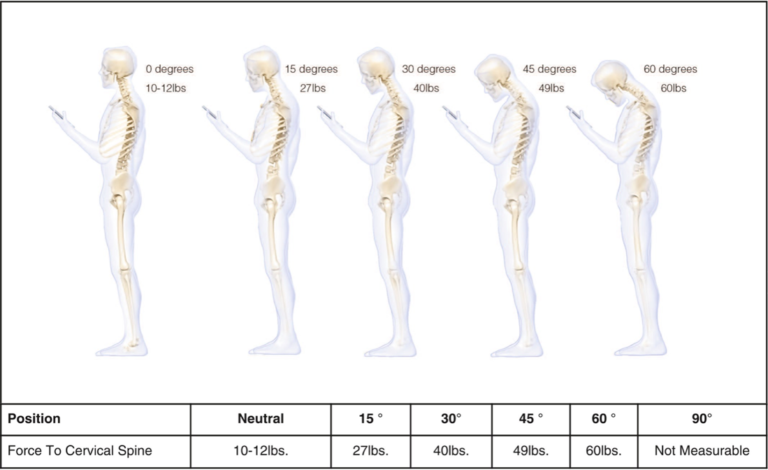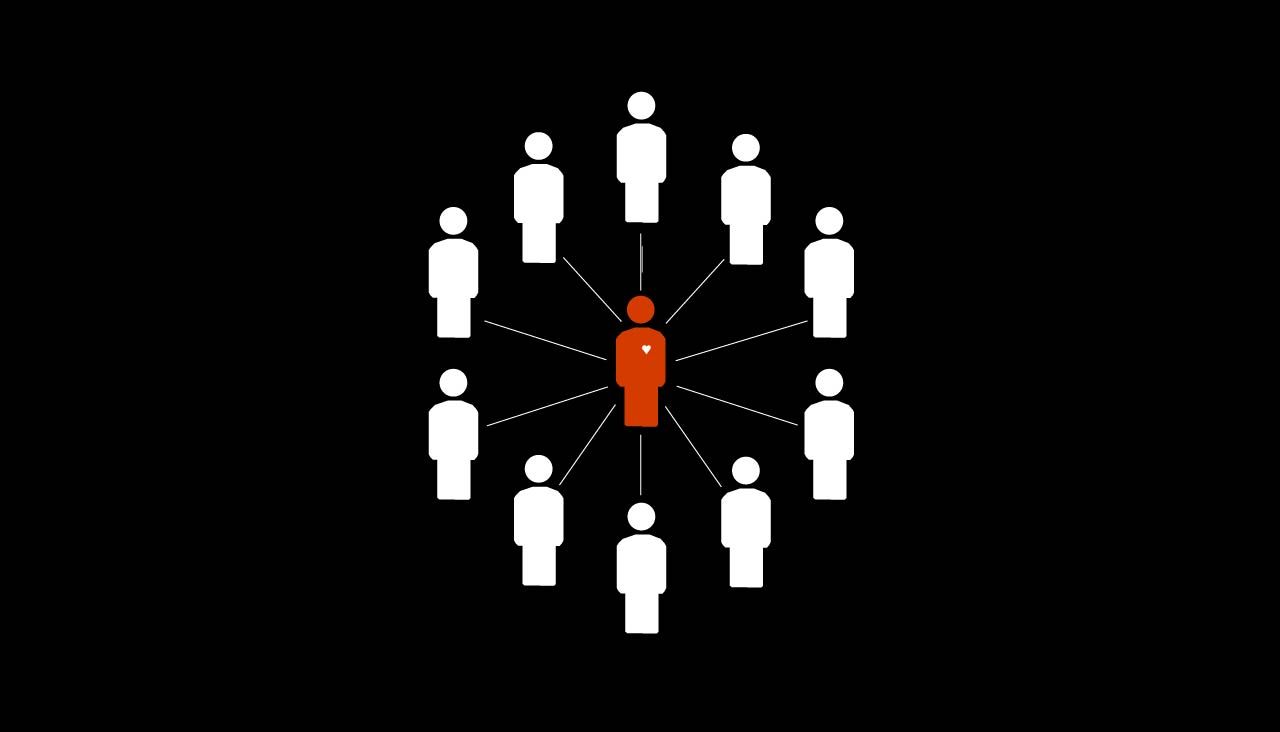
Stiff neck, tension, loss of mobility: why is osteopathy a natural solution for your neck?
Neck pain, also known as cervicalgia, accounts for about 13% of the primary reasons for consultation in osteopathy, annually, in Quebec (2).
A BIT OF ANATOMY TO UNDERSTAND NECK PAIN
The cervical region consists of 7 vertebrae. These vertebrae are separated by an intervertebral disc. This disc, which is filled with fluid, allows the spine to absorb shocks during movements, aids in the mobility of the spine, and provides better cohesion between the vertebrae. The cervical spine is also connected to the shoulders, ribs, sternum, and pelvis through the attachment of certain muscles. Through these muscles and along the side of the cervical spine pass arteries, veins, nerves, and lymphatic vessels. This means that a lack of cervical mobility could also cause pain or discomfort in a region further away from the neck.
WHAT ARE THE CAUSES OF NECK PAIN?
Among the most common reasons for neck pain, we find:
- Traumatic: An impact, a fall, an accident, a concussion, a mild traumatic brain injury are all reasons that can lead to a lack of mobility in the cervical region and muscle tension that can cause pain.
- Joint: A lack of mobility in the cervical vertebrae caused by osteoarthritis, arthritis, herniation, etc. can be the cause of neck pain. In this case, the osteopath cannot cure the cause, but can often relieve the symptoms by working on the surrounding structures to increase mobility and reduce muscle tension..
- Muscular: Tension or a spasm in the muscles of the cervical region can lead to pain and/or compensatory issues.
- Mechanics: Poor posture could lead to muscle tension resulting in a lack of mobility in the cervical spine. Moreover, an issue with the shoulders or jaw, such as bruxism, could also be the cause of muscle tension leading to cervical hypomobility generating pain.
- Visceral: Tension in the thoracic cage involving visceral structures such as the ligaments of the pericardium or the pleural dome could limit cervical mobility and cause discomfort and/or neck pain.
- Stress and anxiety : During periods of stress, neck pain becomes more frequent. This can be explained, among other things, by poor posture and changes in our breathing. Normally, when we breathe, we use the diaphragm as the main muscle. This dome-shaped muscle covers the inner portion of the lower rib cage. However, during times of stress, we breathe more with the upper portion of the chest. In this sense, we use the accessory muscles of respiration more, including those of the neck, namely the SCOM and scalene muscles. This leads to more tension in the cervical region and can cause pain.
Schedule an appointment by clicking here.
HOW CAN AN OSTEOPATH HELP ME WITH MY NECK PAIN?
First of all, the osteopath will take the time to talk with you in order to fully understand your pain and to learn more about your health history. This will allow them to get a better idea of the impacts your neck and body may have experienced. Next, to assist you with your neck pain, the osteopath will start by performing an evaluation to find what might be causing your pain. Then, through their therapeutic manipulations, the osteopath will be able to treat the area that seems to be the cause of the neck pain. Throughout the treatment, they will explain what they are working on in relation to anatomy and your symptoms. If necessary, they can give you advice on your posture and exercises with the aim of helping you maintain the benefits of the treatment.
DID YOU KNOW THAT USING A CELL PHONE CAN BE HARMFUL TO YOUR NECK?
The use of cell phones and tablets has now become a part of our daily lives. We then spend more time with our heads tilted forward to look at screens. According to a study conducted in 2014, the weight of the head increases with the degree of flexion. In a neutral position, the head would weigh about 10 to 12 pounds, but could go up to 60 pounds with a 60-degree tilt, as illustrated in figure 1(3).
In order to reduce the impacts related to this, it would be better to decrease screen time, ensure optimal posture, take breaks, do stretches, support the elbows, etc.

Figure 1: Weight of the head as a function of cervical spine flexion
OTHER ARTICLES THAT MIGHT INTEREST YOU
BACK PAIN, HAVE YOU CONSIDERED CONSULTING IN OSTEOPATHY?
OBSTETRIC OSTEOPATHY: HOW CAN AN OSTEOPATH HELP ME DURING MY PREGNANCY?
BIBLIOGRAPHIC REFERENCES
(1) Neck pain. (n.d). In Larousse Dictionary online. https://www.larousse.fr/dictionnaires/francais/cervical/14321 (https://www.larousse.fr/dictionnaires/francais/cervical/14321)
(2) Morin C, Aubin A (2014) Primary Reasons for Osteopathic Consultation: A Prospective Survey in Quebec. PLoS ONE 9(9): e106259. doi: 10.1371/journal.pone.0106259 PMID: 25184204
(3) Hansraj, K. K. (2014, November). Assessment of stresses in the cervical spine caused by posture and position of the head. Surgical technology international. https://www.scinapse.io/papers/53370736 (https://www.scinapse.io/papers/53370736)

Back pain: how physiotherapy relieves lo...
Persistent lower back pain? Discover how physiotherapy can effectively relieve your backache with a ...
Lire plus...
Mental health and rehabilitation: an und...
Mental health, often overlooked, plays a crucial role in the success of a rehabilitation process. Di...
Lire plus...
Osteopathy and cranial deformities: a ge...
Does your baby have a cranial deformity? Pediatric osteopathy, complementary to physiotherapy, can p...
Lire plus...